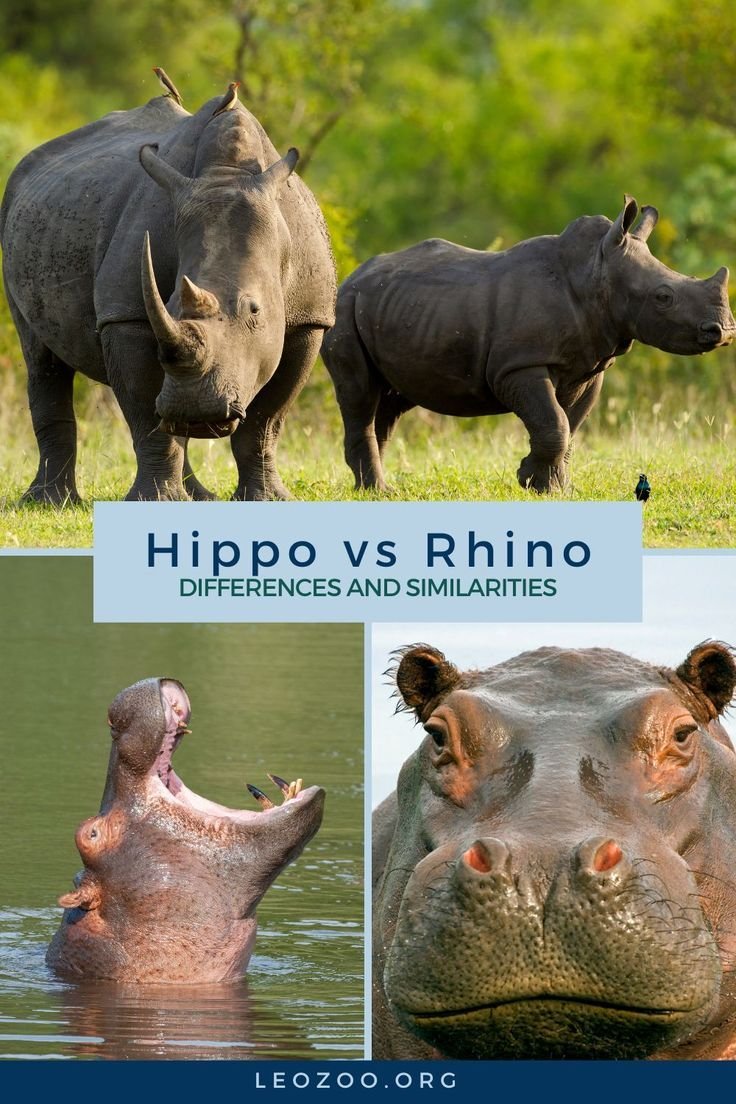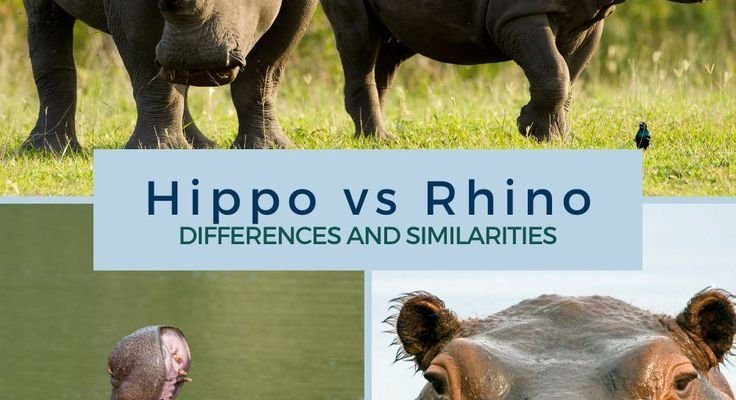
In this article, we’ll explore 10 animals that are similar to the black rhinoceros. We’ll look at their characteristics and how you can distinguish them from one another. Think of this as your wildlife guide—you’ll be equipped with fun facts and insightful details that’ll make you the expert among your friends. Let’s dive in and see what makes these creatures unique!
1. White Rhinoceros
The white rhinoceros is perhaps the most straightforward comparison to the black rhino. With its larger size, the white rhino can weigh up to 2,300 kilograms—much heavier than its black counterpart, which tops out around 1,400 kilograms. The most noticeable difference lies in their mouths: the white rhino has a wide, square-shaped mouth ideal for grazing on grass, while the black rhino features a pointed, hooked mouth suited for stripping leaves from bushes and trees.
You might be wondering why they have such different mouth shapes. Well, it all comes down to their diets and habitats. The white rhino typically resides in open grasslands, where it’s easier to munch on grass, while the black rhino prefers bushy environments with plenty of leaves to snack on. So, if you come across a rhino and can’t decide which one it is, take a look at that mouth!
2. Indian Rhinoceros
Next up is the Indian rhinoceros, or the one-horned rhinoceros. It’s another close cousin of the black rhino, but it has some distinctive features. The Indian rhino is larger, with a more wrinkled skin that resembles armor plating. Unlike the black rhino and white rhino, which have two horns, the Indian rhino sports just one prominent horn, which can grow quite large.
Also, it’s worth noting that the Indian rhino tends to live in more forested and swampy areas, primarily in India and Nepal. This contrasts with the black rhino, which can thrive in various habitats. If you’re ever lucky enough to see one, you’ll instantly recognize the Indian rhino by its single horn and the unique folds in its skin—truly a sight to behold!
3. African Forest Elephant
The African forest elephant might not be an obvious choice, but they share some habitat preferences with the black rhinoceros. Both animals roam the dense forests of Central and West Africa. While the African forest elephant is smaller than its savanna-dwelling cousin, it still boasts impressive tusks and a more rounded body.
Here’s the thing: distinguishing between an elephant and a rhinoceros can be tricky at quick glance. However, you can tell them apart by their distinct shapes. Elephants have large, floppy ears and are usually more social, often seen in herds. In contrast, black rhinos are solitary creatures and have a more rugged, sturdy body. Their unique adaptations make them both fascinating in their own right.
4. Javan Rhino
The Javan rhinoceros is one of the most endangered large mammals on Earth. Like the black rhino, it has a single horn and a similar body shape. However, the Javan rhino is smaller, weighing around 900 kilograms, and it features a more folded, brittle skin texture.
One unique aspect of the Javan rhino is its habitat preference for dense tropical forests and swamps, primarily found on the island of Java in Indonesia. So, if you’re ever in Java and come across a rhino, remember to look for the more compact size and a single horn—those features set it apart from its black rhino relatives.
5. Hippopotamus
At first glance, the hippopotamus might seem like an odd comparison. After all, they don’t look too similar to rhinos. However, they share a few common traits: both are large, have thick skin, and are found in African river systems.
The hippo is much bulkier, with a wide mouth and tusks that are quite prominent. While black rhinos are primarily terrestrial, hippos spend a lot of their time in the water, which helps keep them cool under the African sun. So, if you’re by a river and spot a large creature with a wide mouth but no horn, you’ve likely seen a hippo rather than a black rhino.
6. Tapir
Though smaller in size, the tapir shares some physical traits with the black rhinoceros, such as a rounded body and a large snout. These creatures can be found in various habitats across Central and South America, as well as in Southeast Asia.
The tapir’s body is more stocky compared to the rhino’s, and it has a short, prehensile snout that resembles a miniature trunk. This allows it to grab leaves and fruits easily, unlike the black rhino, which relies more on its powerful mouth. If you see a creature that looks like a weird blend of a pig and an elephant, it’s probably a tapir!
7. Warthog
The warthog might surprise you as a similar creature to the black rhinoceros. These wild pigs are often found in savannas and grasslands of Africa. While they are much smaller than rhinos, their sturdy build and tusks can remind one of the tough nature of a black rhino.
Warthogs have distinct facial features, with large tusks that curve outwards and a somewhat scruffy appearance. They love to root around in the mud, often using it to cool themselves down. So, if you come across a rough-and-tumble pig-like creature with tusks, you’re looking at a warthog rather than a rhino.
8. Pygmy Hippopotamus
The pygmy hippopotamus is another smaller relative that you might not immediately associate with black rhinos. Found in the forests and swamps of West Africa, pygmy hippos are much smaller and more elusive than their larger relatives.
While they share a similar body shape, pygmy hippos are more compact with slightly longer limbs. Their skin is also smoother compared to the wrinkled texture of a black rhino. If you spot a small, semi-aquatic creature with a big personality and a penchant for mud, it’s likely a pygmy hippo!
9. Giant Sable Antelope
The giant sable antelope is a lesser-known animal that can somewhat resemble the black rhinoceros in its general stockiness and robust presence. These antelopes are native to Angola and have beautiful long, curved horns that can reach impressive lengths.
Their striking black coat and white facial markings give them a distinct look that sets them apart in the African bush. While they are significantly lighter than a black rhino, their strong build and the habitats they share make them an interesting comparison. So next time you see a big, elegant creature with impressive horns, remember that it’s not always a rhino!
10. Cape Buffalo
Last but not least, let’s talk about the Cape buffalo. These animals have a powerful build and a set of impressive horns that can be intimidating, much like a black rhino. Cape buffalo are often found in herds roaming the grasslands of Africa.
While they share some common habitats with rhinos, their behavior is quite different. Buffaloes are social and often move in groups, whereas black rhinos tend to be more solitary. If you’re in the African plains and see a large animal with horns and a hefty body moving together with others, you’re likely looking at Cape buffalo, not a rhino.
In conclusion, the animal kingdom is full of incredible creatures that share traits with the black rhino. From other types of rhinoceroses to completely different animals, each has its own unique charm and ecological role. Next time you think of the black rhinoceros, remember these fascinating relatives and the subtle differences that make each one special. Understanding these similarities and differences helps you appreciate the diversity of life on our planet—even if you’re just hanging out with your friends at a café!

